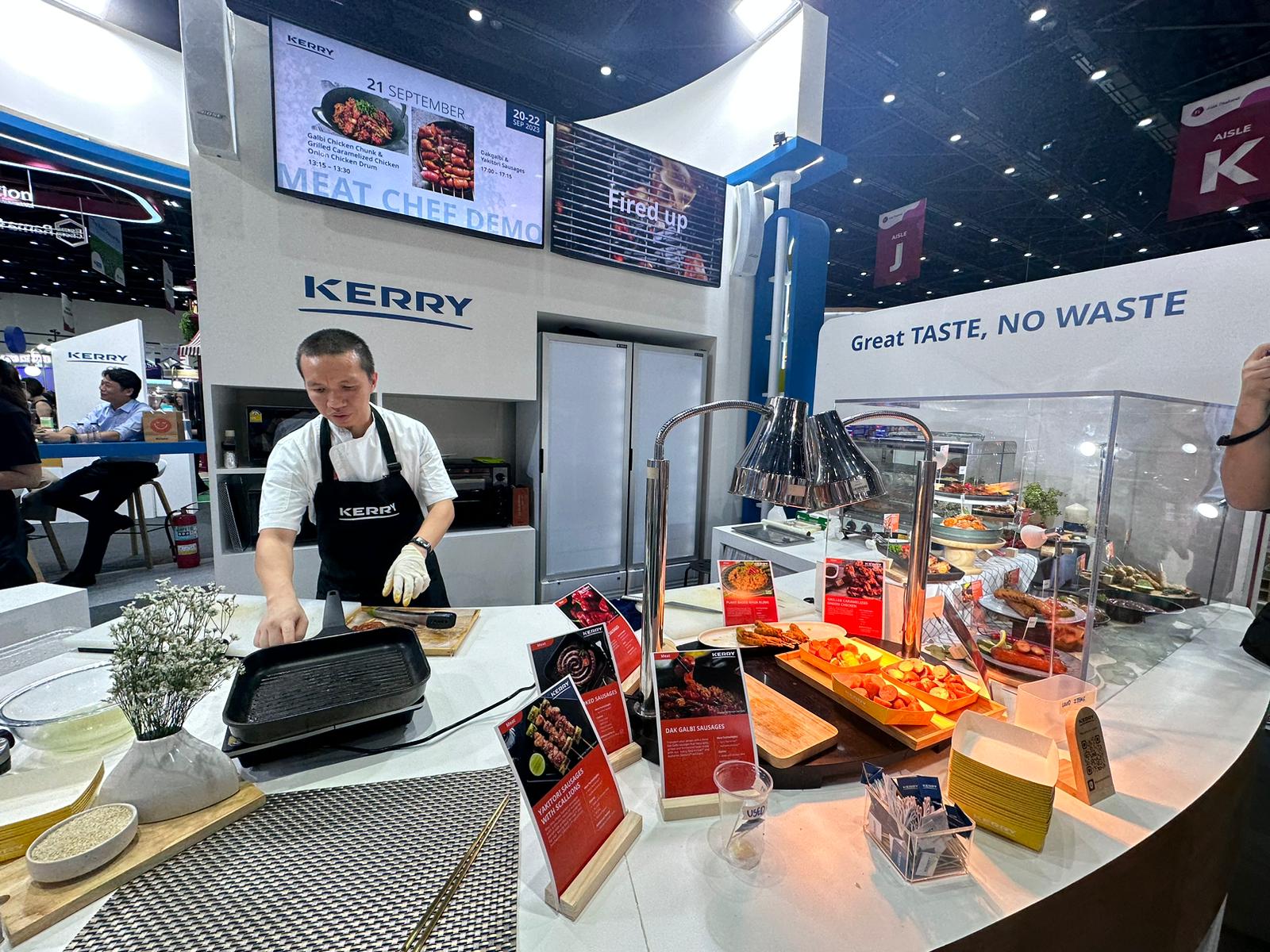Across the supply chain, the food industry is increasing its efforts to cut food waste. In food preservation, ingredients for shelf-life extension not only address food waste but the growing demand for clean label solutions.
One of Kerry’s experts in this area is Dr. Pornpun Theinsathid (PhD), Business Development Manager, Food Protection & Preservation (Meat), Kerry Asia Pacific, Middle East & Africa. Dr Theinsathid has 15 years of global experience in food protection and preservation, and holds a master’s degree in biochemistry and doctorate degree in technology and innovation management. She closely works with customers in products development from food safety and nutrition to taste.

Dr. Pornpun Theinsathid (PhD), Business Development Manager, Food Protection & Preservation (Meat), Kerry Asia Pacific, Middle East & Africa
Dr. Theinsathid, how do you distinguish between food protection and preservation?
Protection is concerned with the level of food safety, and the principles of food safety aim to prevent food from contamination which can cause food poisoning. On the other hand, preservation refers to the extension of the duration of shelf life, depending on the food category. Both protection and preservation constitute food safety.
Over the centuries, industry has come up with different methods to protect and preserve food. What technical development or innovation has revolutionised the modern food industry, in terms of ingredient solutions?
I would say the conventional solution would be E-numbers such as Provian® K (potassium acetate) or Clean Label technology using kitchen cupboard ingredients such as Buffered Vinegar.
For many end consumers, the term “preservative” is associated with substances that are artificial or unhealthy. How should manufacturers go about this kind of thinking?
For Thai consumers, the word “preservative” in the local language has a negative connation – it means to prevent spoiled food. They feel that preservatives are unhealthy.
However, research carried out by Kerry shows that in general global consumers accept the use of preservatives as they are concerned about food sustainability and would like to reduce food waste. The result of our research shows that 72% of consumers agree that extending the shelf life of a food or drink would help them reduce waste.
Manufacturers should then think about how to develop and design food production to reduce food waste. It is a major challenge as it is difficult to produce longer shelf life while still maintaining qualified food quality. It takes a huge effort and time to implement in lab and launch to markets.
Based on Kerry’s surveys, what do consumers know about food waste reduction?
Just recently we launched new research on consumer behaviour and attitudes toward food waste and how preservation and shelf-life extension can help our customers and their consumers reduce food waste. We presented the same in Fi Asia this year.
Early this year, our global team was able to collect 60 in-depth interviews with consumers from ten countries. We also conducted quantitative exploration with over 5,000 consumers across ten countries: Australia, Mexico, Brazil, South Africa, Canada, Thailand, France, United Kingdom, Germany, United States. The sample size of each country is approximately 500.
We asked them about why food goes to waste in their homes and about their unique food waste journey. The survey also asked about the key drivers of their purchase behaviors as well as the relevance of preservatives and the types of food and drink to throw out.
We found that preservation and shelf-life extension are their priority concerns, and they understand that preservatives can help in food waste reduction. Besides this, they care about improving their health through better nutrition focus. Sustainability is also a concern, and it impacts on their consumption. They will purchase products with longer shelf life to help reduce the carbon footprint of food production. These three drivers, sustainability, nutrition focus and food waste reduction awareness overlap, depending on the consumer’s individual priorities.
Consumers are also concerned that the taste, nutrition, and the texture should be stable as they have just purchased. Meat and dairy products are the key types of 8 foods categories to throw out because of the short shelf life. Some foods were mostly thrown out as the taste and colour changed, although they can still be consumed. Preservative applications such as ingredients and packaging keep fresh, colour and texture are the solution to reduce food waste.

Kerry’s portfolio includes sodium-free buffered vinegars, potassium acetates, multifunctional systems to solve complex preservation challenges in meat products, and a range of fermented wheat products for mold control in bread applications. Some of these were featured at their booth in Fi Asia 2023.
Which preservation ingredients can extend food products?
Kerry provides its customers with a variety of solutions around food preservation and taste including low sodium technology which increases the food safety level while maintaining great flavour. Our clean label preservation technology also matches or even outperforms the shelf life of conventional preservatives.
The Isoage®/Flavoset is a portfolio of kitchen-cupboard ingredients which expands the protection capabilities and offers natural antimicrobials made from natural resources. They harness the power of nature to deliver the optimal preservation solution. Their antimicrobial properties protect food products to ensure freshness and quality over shelf life.
Now, many frozen food customers are interested in just chilling products. This is because frozen food production and transportation consume high energy essentials such as electricity. For this, we have preservation technologies to keep the freshness of chilled food. We can recommend the right technology to meet SKU requirements.
Our Multifunctional technology/ Built-in technology for preservation can be applied to all food categories SKU to reduce food contamination risk, food product recall and cost on the part of the customer.
The innovations you talk about have helped reduce food waste. But even today, food loss and food waste are still major issues in the industry. What should industry players do to meet these challenges?
All sectors – the public sector as policy maker and private sector as the consortiums must work together to help drive food waste reduction. For example, Australia launched the campaign “Stop Food Waste Australia”. Germany and Scandinavian countries also have clear policies. The private sector is required to commit to follow and implement.














